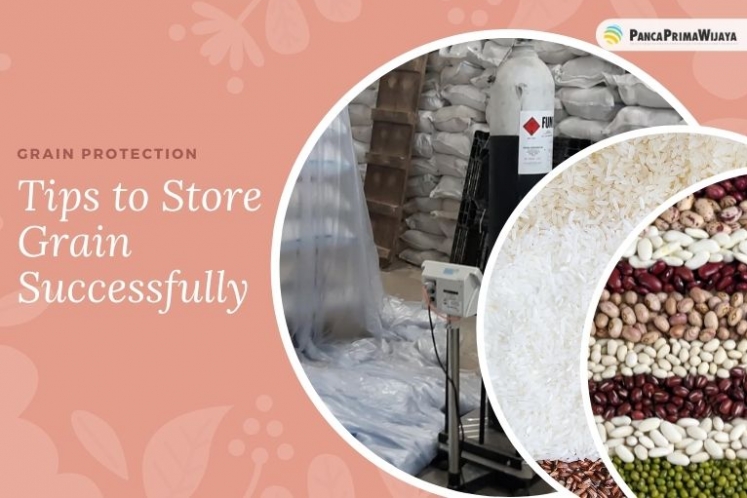 Every grain storage owner has to understand grain protection knowledge so that they can avoid such a huge loss. Another way to give a good grain protection is by fumigation. It is a usual way that is applied to all harvest products to protect it.
Every grain storage owner has to understand grain protection knowledge so that they can avoid such a huge loss. Another way to give a good grain protection is by fumigation. It is a usual way that is applied to all harvest products to protect it.
Grain is a commodity which is susceptible to damage during its storage. Grain can be damaged easily because of pests such as weevils or insects that usually enter the silo or the storage.
This can be a serious problem that makes grain’s quality degrade as the storage time. Every business owner or storage owner has to understand grain protection knowledge so that they can avoid such a huge loss.
Grain that has already been harvested from the field is rich of fresh nutrients which is a good source of food for the pests or microbes. Storing grain without giving a good protection will let pests and microbes eat grain to take the nutrients. Thus grain quality decreases as the pests and microbes digest it.
Grain protection can be achieved by paying attention to some vital factors that support the grain lifetime such as moisture content, storage hygiene, and aeration system.
Maintaining grain quality concept focuses on maintaining the grain moisture content as the most important factor to microbes growth. Grain should have low moisture content which is below 12%, a condition where microbes can not grow well.
Controlling moisture content is a way to give an effective grain protection by inhibiting the microbes growth. Here are some tips to control moisture content:
Good hygiene really matters to a good grain protection from the first time the grain arrives at the store. Sanitation is a necessity to all commodities storage in order to protect them from pests or insects from entering the storage.
Workers can do sanitation by cleaning the environment around the storage like cleaning the tools that have already been used and using insecticides to clean the surfaces.
The next step to do grain protection is by separating new grain coming from the farm to the storage from the old grain that has already been stored for some time.
New grain must not be kept in the same place or storage with the old grain because it will make the new grain quality decrease as the time goes by. The latest grain has a higher moisture or water content compared to the earlier ones, so that it will lead to a microbes and mould growth
The next step to do a good grain protection is by making sure that the silo is in a safe condition from any kind of attacks from the outside.
This can be done by covering the silo or sealing it or even you can choose a silo with a good sealed model when you buy it. Sealed silo also supports a good fumigation when it is applied in storage.
Fumigation needs a supportive environment that can keep the gas from leaching out to the other place around the storage that can endanger other living creatures and humans as well.
Another way to give a good grain protection is by fumigation. It is a usual way that is applied to all harvest products to protect them from any kind of pests attacks.
Fumigation must be done in a closed room by using a tarpaulin made from plastic sheet which is gas proof to let the fumigant gas to spread to the whole storage room to kill the pests.
Painting silo with white paint can make the silo temperature to be cooler which is around four degree Celsius. Cool temperature will help the grain lifetime at storage to be longer due to the inactivation of any kind of microbes or mould growth.
Low temperatures also help to hinder water from being transported in and out of the grain. At a cool temperature, insects' growth will decrease as well due to its optimum temperature for breeding that needs a warmer or room temperature.
Those advantages will absolutely give a better grain protection and at the same time keep the grain quality.
Aeration is the next way for grain protection. Silo aeration is done by controlling the air circulation in the room by using a fan.
Fan will remove heat coming from the grain and also maintain the moisture at a stable condition as well. Heat will cause microbes' growth which is dangerous for the grain during the storage.
Aeration gives a better grain lifetime because it controls the environment that’s suitable for the grain. As a result, the grain quality will remain the same when it exits the storage to being distributed.
The next tip to give good grain protection is by storing the grain underground. Storing a grain can be done underground which focuses on protecting the grain from unwanted climate changes such as drought.
Underground storage system works by removing the warmer air from the bottom to the up room. It helps to avoid the grain spoilage due to the heat accumulation that can trigger the microbes’ growth.
Don't hesitate to contact us if you want to know more about our products.